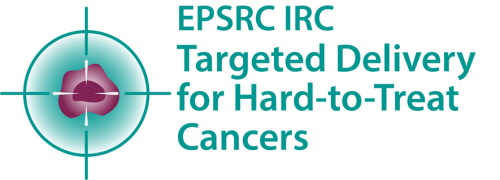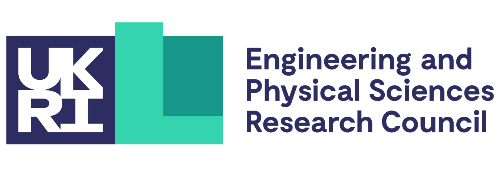Dr Tobias Naegele has been part of the IRC from start to finish. Here, he explains how he turned a 250-year-old process into a pioneering prototype drug delivery device that he hopes could help improve outcomes for patients with glioblastoma.
Iontophoresis is a very old field, dating from the mid-1800s and the discovery of electricity. Scientists and doctors wondered whether they could use electric currents to deliver drugs into the body: by applying a drug as a liquid, gel or cream and using an electrode on the skin, would the drug follow the electric current? The answer is yes, and they called it iontophoresis.
Since then, it has been in and out of fashion. Iontophoresis was very popular around 1900, 1950 and again in the 1990s, but there is still only one iontophoretic device used in medicine - the ingenious sweat test for diagnosing cystic fibrosis in infants.
Transdermal iontophoresis has major limitations. Converting electrons (the charged particles which flow through our electricity grid) into ions (the charged atoms which conduct electricity in the body) involves applying a voltage between the skin and a metal plate or electrode. When you do so, chlorine gas is produced, as well as very alkaline conditions which damage biological tissues. This, then, was our starting point.
I work in a bioelectronics laboratory with Professor George Malliaras at Cambridge. Our group’s primary focus is developing implants for the brain, spinal cord or peripheral nerves to improve the lives of patients brain cancers, traumatic nerve injury and chronic pain.
I came to the University of Cambridge as a Masters student and stayed on for my PhD, so I’ve been involved with the IRC since the outset. Although my background is in physics, I now work across diverse fields from fundamental electrochemistry to electronics, fabrication and implementation, as well as in vivo validation.
Working with the IRC is different because of its size, funding and makeup - the fact that it’s so interdisciplinary and collaborative. Different teams come from different fields. We come from engineering, but others are clinicians, fundamental biologists or chemists. Coming together for meetings - presenting work, getting feedback from very different perspectives and exchanging ideas - is always fruitful. And seeing our ideas progress from paper to prototype and now into living systems is terribly exciting.
The IRC is a useful way to learn about new techniques and equipment. We had a problem detecting one our drugs, for example, and when I talked about it to an IRC member at a meeting they told me about equipment at their university that would solve our problem. That was the start of a new collaboration. It’s one of the many reasons why the IRC is such a cost-effective model for doing research.
The IRC’s aims are to find new ways of delivering existing drugs to improve outcomes in three hard-to-treat cancers. For glioblastoma, a brain cancer, that means finding ways to circumvent the blood-brain barrier. The barrier protects this vulnerable organ, but also limits delivery of chemotherapy drugs from the blood to the brain and therefore limits their efficacy. As part of the IRC, our group has been looking at ways to use iontophoresis to deliver chemotherapy drugs directly into the brain.
After six years, we now have a working prototype. The proof of concept we published in 2024 in a paper in Advanced Materials Technologies. It shows that our new technique works and can reliably deliver drugs at high concentrations. But to reach this stage we had to overcome several significant challenges.
The first challenge was how to stop chlorine gas production and pH drift to make the system more biocompatible. The solution came by coincidence from another field - redox flow batteries. These are huge facilities the size of shipping containers used to store energy from renewables like wind turbines. After coming across this, and visiting a group of scientists at Harvard, I realised we could use this technique for our application.
We succeeded in shrinking the system from shipping-container size to something 2mm x 3mm. Instead of splitting water and generating a gas, we use a ‘sacrificial molecule’ that can be easily oxidised or reduced - accepting or giving up an electron. This way you’re converting electrons to ions without gas production or pH drift.
Our next major challenge was keeping the drug away from the electrode so that the sacrificial molecule alone, not the drug, is oxidised or reduced. We have patented the principle we developed to do this.
As well as miniaturising the system, we had to work out how to build this tiny device, which we achieved using additive manufacturing or 3D printing, and develop ways to test it, something for which there is no precedent.
The IRC has been central to what we’ve achieved, especially for solving the manufacturing challenge, because the IRC includes experts in manufacturing and regulatory affairs. Building new medical devices demands compliance with a host of international standards, something academics aren’t experts in. But because everyone in the IRC is working on new drug delivery vehicles, each at different stages of the journey from lab to clinic, we can share knowledge and ideas.
Having developed our device and demonstrated that it works well and reliably, we now need to show that it’s safe, first in animal models and then first-in-human trials. We also need to work on its sterilisation and packaging. And we are currently working on manufacturing even smaller, less invasive devices.
Our goal is to implant the device into the brain, connected to a port system on the skin. A little like dialysis, this would enable patients to come into clinic, be connected through the port to an external machine, undergo a treatment round of 30 minutes and then go home. That would mean it’s good for both patients and the NHS.
When a patient comes into hospital for a brain biopsy, a small hole is drilled into the skull and a tiny amount of tissue removed using a very thin needle. It’s a comparatively minor procedure done as a day case. If our device was as small as a biopsy needle it could be inserted into the tumour immediately after the biopsy, avoiding the need for additional surgery.
Being part of the IRC means I’ve been able to visit fellow IRC member Ryan Matthew, a neurosurgeon at the Royal Infirmary in Leeds, and watch him conduct these biopsies. As researchers, seeing clinicians at work is incredibly important. It means we can develop medical devices that are compatible with neurosurgery tools, equipment and procedures.
The IRC has been incredibly helpful in this respect. The IRC’s aim is clinical translation, so working alongside clinicians means that as researchers, it’s kept our focus firmly on this goal and pushed us forward massively.
Developing new medical devices is expensive and time consuming. The IRC has enabled us to come a long way but we will need another five to ten years, plus the investment and expertise of an industrial partner or spin out for iontophoresis to complete its journey from the mid-1800s into a twenty-first century patient.


